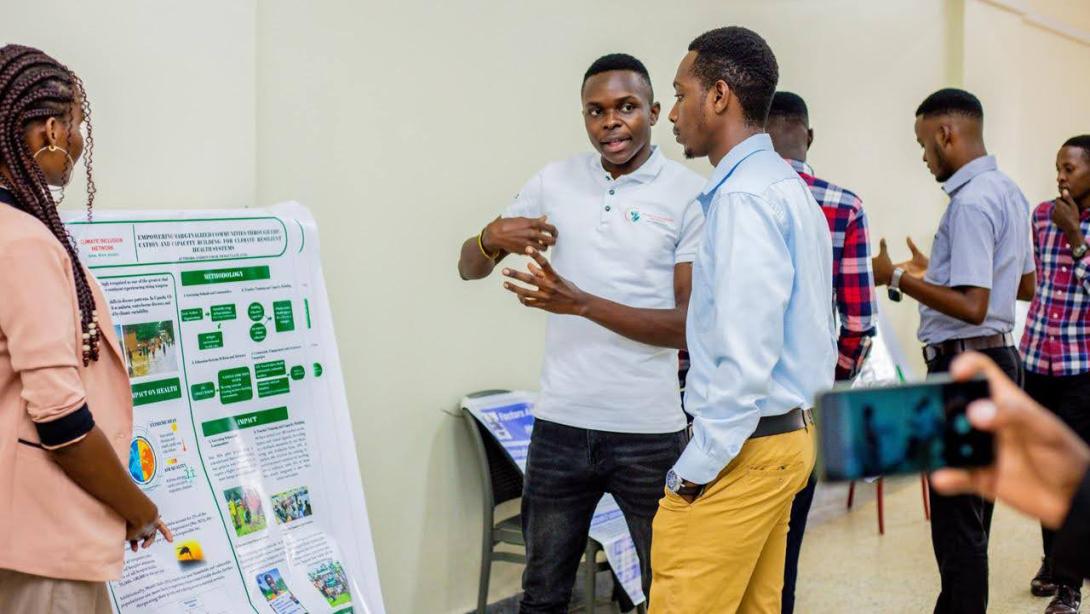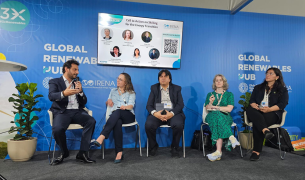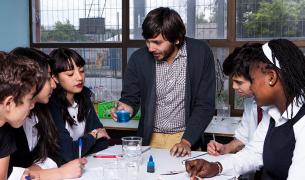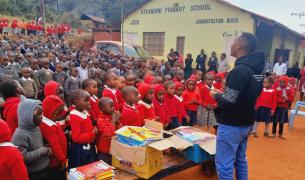Building a movement of climate education leaders across the system

Imagine a large group of fellows, alumni and staff from across the world come together to deepen their climate education leadership. They apply this leadership to foster the empowerment of others—in their classrooms, organizations, communities, policy circles, etc.—to grapple with climate change related challenges, find their own voice and agency for climate education, and become leaders themselves. Ultimately, the movement that starts with this group could snowball into equipping tens of thousands of students with the knowledge, skills and resilience to address climate change, actively engage with their schools and communities, and make life and career choices informed by what they learn—students who, indeed, build a better future for themselves and all of us in a world whose course is fundamentally shaped by climate change.
This is the underlying theory of change of Teach For All’s Climate Education Champions learning series. It’s based on the cascading Snowflake Model of community organizing coined by Marshall Ganz, where a movement is built not around the leadership of a few individuals at the center, but is instead a shared responsibility for a common goal, enabling widespread participation and impact. Our version of that model rests on three key principles:
- Empowering local leadership and those closest to the problem
- Connecting leaders(hip) back to a global peer community for learning and growth
- Learning from what works to foster replicability and scale
In this spirit, over the past six months, 54 participants from 27 countries, through the Climate Education Champions learning series, honed their strategies and skills for supporting others to realize and develop their own agency for climate education. The series includes 10 sessions that each focus on one climate education leadership tool (for example, climate storytelling or lesson design), always moving from deep understanding of the tool, to practice, to application. Over the course of the series, each participant defined and implemented a climate education leadership project applying those tools, and refined it in deep partnership with their peer community. In this third cohort of the learning series (2025), 93% of participants are currently implementing climate education activities, which shows the series’ power in equipping and motivating people for realizing their leadership goals.
All these leaders become multipliers for advancing climate education at all levels of the education system or, to come back to the Ganz’s model, they form new crystals in the snowflake of the ever-growing movement. The common areas of focus for their climate education leadership are:
Developing and delivering climate education lessons and training, thereby equipping thousands of students and teachers to be climate education ready
For example, Nailyam Tokhtamova, a Teach For Qazaqstan alumna, observed that teachers she worked with didn’t feel ready to teach about climate change and were faced with a dearth of contextually relevant resources to this end. In response, she engaged over 250 STEM teachers across 11 cities in Kazakhstan in information sessions, workshops on integrating climate topics into STEM lessons, and sharing teaching resources and co-designing lessons. As a result, participating teachers reported feeling empowered to engage in climate education and using the resources, and many started hands-on projects with their students. (Learn more about Nailyam’s work.)
Raising their voice in global events or starting their own initiatives for advancing climate education
Like Gabriela Fernández Campos, an Enseña Chile alumna, who applied her learnings to design and facilitate a climate education workshop for Enseña Chile fellows at the organization’s national meeting. The fellows left inspired and motivated to integrate climate education into their respective subjects and were supported to facilitate more relevant, applicable and inter-connected learning for students. Gabriela is also part of the leadership team of Abya Yala, the network alumni-led regional climate education network in the Americas. She believes in the importance of applying a strong social and equity lens to climate education and has recently teamed up with two collaborators to start the Aprende Verde foundation to pursue her vision for and leadership in climate education.
Starting/leading teacher or school-wide climate education communities to drive action at scale
Mowmita Khan, a fellow-turned-coach at Teach For Bangladesh, works to support the whole Teach For Bangladesh community, including the 40 fellows pursuing an in-depth climate education track, to integrate climate education in regular classroom practices (learn more here). She’s driven by the belief that there is no quality education without climate education, and the goal of embedding climate education in the national curriculum to reach all national schools.To this end, Mowmita has co-led the development of Teach For Bangladesh’s government-aligned Green Curriculum. Now, she looks to build an even stronger climate education community across the Teach For Bangladesh network to engage and inspire more people.
Working with communities, policy and organizations to guide systems-level integration of climate education
Emor Andrew, a Teach For Uganda fellow, actively engages students, teachers, and community members at his school in meaningful, locally rooted climate initiatives. He also founded the Climate Inclusion Network (CIN), which amplifies the voices of marginalized groups, ensuring their needs and perspectives are represented in climate conversations and decision-making spaces. He regularly engages in climate policy deliberations at the national level and also shares his insights to inform global frameworks, for example at the COP29 Teacher Camp. (Learn more about his work.)
These are just four of the many brilliant examples of the educators who participated in the learning series—many more were spotlighted in Teach For All’s 2025 Earth Week campaign, and on LinkedIn.
All these illustrate how participants take action to enable others to lead climate education. In a locally rooted and globally informed way these leaders demonstrate what’s possible and what works for implementing climate education at scale, thereby paving the way and creating blueprints for others across the world. In other words, all of them illustrate the Snowflake Model by advancing climate education in deep partnership with others and thereby expanding the movement. I’m incredibly proud of all these bold climate education leaders - and excited for all future snow crystals to further grow the movement!



